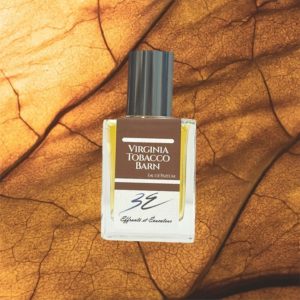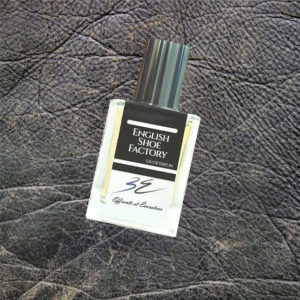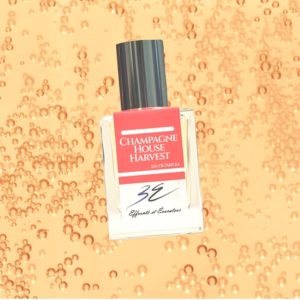Introducing Effronté et Évocateur, a new niche perfume brand, created by Well-Sewn and independent perfumer Carter Weeks-Maddox

About Effronté et Évocateur
Perfume has always been a uniquely sensory experience, but it is also art, of high form. Notes and oils are the canvas upon which a perfumer creates, and that is critical to remember, not just for Effronté et Évocateur, but for all good perfume.
The memories that perfume brings to the surface are usually scattered, unintended consequences of the other goals set by the maker. A note of jasmine might remind you of a hidden beach from your childhood, or a particular fragrance, of someone you loved who wore it. For me, evoking that kind of sensory reaction was key, a focal point rather than a side effect. Most perfumes are made just to ‘smell’ a certain way, but I wanted something that ‘feel’ a certain way, bring up an emotional response, just a much as it plays with the olfactory senses.
It goes hand-in-hand to my time working in wine… in my experience, most sommeliers would offer pairing by first inquiring what a person would be eating, and pairing the wine to the food solely. By contrast, my first question was always “what kind of mood are you in?” It sounds odd, but think about it, your mood impacts your tastes. Trying to ignore that may give a very well-studied wine pairing, but soulless. It’s like music, it can be technically proficient, but without feeling it has no soul. Like a painting done by a machine… it may be very precise, even beautiful, but again, no soul. Emotion, feeling, adds a depth that we can’t really quantify to art… and with Effronté et Évocateur, I wanted to bring that aspect to the forefront.
Roughly translated, the name Effronté et Évocateur means “brash and evocative”, and the logo is a stylized 3E, for the three E’s of the name
Series I – Evocative Images
What if, instead of just emotion, a scent could mentally take you to a specific place and time? Maybe simply far away, maybe in the distant past, maybe even something idealized only in the imagination, but still crystal clear to the mind… that’s the intention with Evocative Images, the first series from Effronté et Évocateur. Each scent is meant to capture not only a unique moment in time and place, but a perspective, a concept, and a dream. From the ancient library at Alexandria to English factories, a rooftop garden in present-day New York City to the old-world magnificence of Prague, these are destination perfumes that provide thought-provoking journeys with every encounter.
The first releases from the series are Champagne House Harvest, an effervescent harvest grape scent; English Shoe Factory, a deep leather, wood, and tea combination; and Virginia Tobacco Barn, a unique tobacco, hay, and autumn cypress scent.
The second release is currently in development, and expected to release soon!
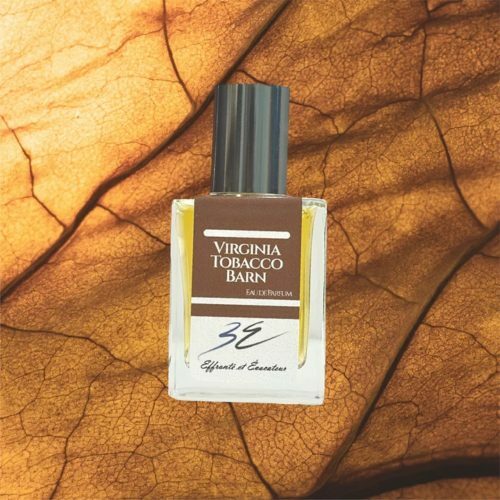
The soul of Shenandoah, verdant and lush amidst the old hills and misty valleys. Here, in early autumn, the smell of the soil enriches to the fullest, the old cedar wood barns bequeathing their charmed, bygone age, the flue-cured tobacco leaves aging to timeless perfection, earthen and pure. Travel to a time when the scents from a Virginia Tobacco Barn were king.
Featuring notes of sunflower blossom, chamomile, cocoa, clary sage, warm hay, plum, Virginia cedar, tobacco leaf, oudh, Alaska cypress, myrrh, oakmoss
From the creative director:
Virginia Tobacco Barn started as a simple idea – there are many tobacco-forward perfumes out there, but they seems to be one of three extremes. Either they used a very odd, burnt tobacco scent, they overwrought the tobacco with a weird milieu of other unrelated notes, or they immediately ‘complimented’ the tobacco with an anise note. The anise note was always particularly irksome, as may people who suffer migraines are likely to sympathize, given that cinnamon, anise, and wintergreen are three of the most common migraine triggers.
I wanted something simpler… the scent you get when you walk into a high-end humidor, combined with the scent of drying tobacco leaves, as you’d find in a tobacco barn. The latter is where we conceived of the name of the fragrance, the image of an impressively old barn, standing alone in a field, like something from a ???? painting where you’d expect a “Drink Coca-Cola” sign on the side. From that, combine the scents you’d expect from the surrounding field and the barn itself. Put that in early autumn, a season with its own unique scent, particularly in the woods and fields, and imagine it at dusk, just after a thunderstorm, and the time and place is set.
If I’m honest, I went with the ‘Virginia’ in the name simply because of the fact that, out of most people I spoke to, it was the area that came to mind first when thinking of tobacco production, but I suppose the tobacco barn could be anywhere you choose it to be, so long as it’s a tobacco producing area.
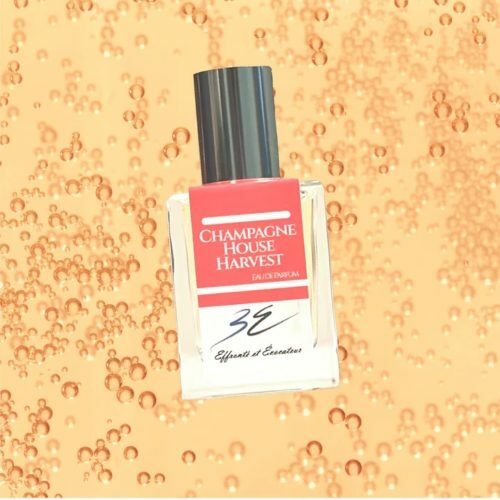
Springtime at a French vineyard near Èpernay…the stone of the House, the bitter skin of the grapes, the rich soil, green vines, and oak of the barrels. The heat of the harvest day giving way to a mild evening, workers in their dirty clothes sharing a taste of vintages from years gone by, effervescence hanging in the evening air. Welcome to the Champagne House Harvest.
Featuring notes of fizzy champagne, rhododendron blossom, apricot, green cognac, davana, Bourbon rose, rocky soil, opopanax, salt, mignonette, charred oakwood
From the creative director:
As a sommelier, Champagne House Harvest was a deeply personal concept, though it is one that is complex to explain. The first thing to understand, I suppose, is that while wine vineyards are called that – vineyards – champagne ones are called ‘houses’, referring as much to the grapes, vines, and soil, as much as the buildings themselves. A second big thing to understand is that very few of the biggest champagne producers, particularly those sold in the United States, actually grow their own grapes. I know, it seems counter intuitive, but there’s a reason for this.
When you buy a bottle of a non-vintage champagne, you expect it to taste the same every time you buy it. The trouble is, grapes from the same vineyard will not produce the same flavor one year to the next; changes in temperature, soil conditions, fertilizer, even wind patterns, can change the flavor from one harvest to the next. So, in order to produce champagne that tastes the same, there are people, called negociants, who go out and buy grapes from many different growers, which can then be combined by the winemaker (or in this case, the champagne maker), to create the same taste, year over year.
However, there are still those growers from whom they get their grapes… and it is one of those growers which I visualize for this scent. These are smaller houses, and they usually do produce, in small amounts, their own champagnes, which are appropriately enough commonly called ‘growers champagnes’. Sadly, many of those unfamiliar with the process overlook these wonderful offerings, but I digress. The concept here was to capture mid-morning on the last day of harvest at a champagne grower, which would be much more agricultural and unrefined than you’d imagine from the hallowed halls of the huge names you commonly think of.
You have the chateau itself, smaller and unimposing, but with stone walls, warmed by the sun. The bitter grape skins from the freshly harvested grapes, tannins from the aging vats, some green from the vines, and of course, all around, damp, tilled soil. You have a slight vanilla, from the French oak used in wine barrels, and some sweetness from the sugars that are naturally occurring in the grapes. Being a harvest day, and champagne grapes (as with all quality wine grapes) still being harvested by hand, there would be some sweat from the harvesters, a combination of seasonal workers, employees of the house, and even volunteers.
As this is a grower, rather than one of the major houses, and they produce their own champagnes, they would have a few bottles open from past vintages, both to see how the aging process is going, and simply to enjoy the harvest day… from this, you’d have the effervescence that is so distinctly a signature of champagne. Finally, as a vineyard being in the Epernay region, you may have some raspberry, wild French lavender, and even mint growing wild nearby. Top all of this with the hint of morning dew, and the scene is set.
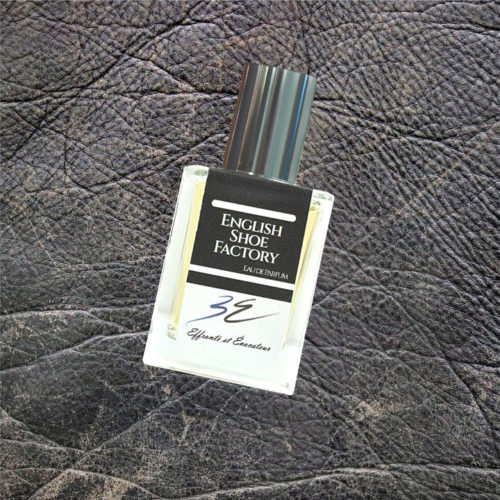
The pride of Northampton, industrial and fervent in the maintenance of British charm and grace in all avenues. The old tapestries and ironworks still cling to the brick-and-mortar façade like charmed reminders of all that was once good in life, an oasis of a bygone time when leather and rubber, wood and machine oil engulfed the senses…it’s the unique scent of an English Shoe Factory.
Featuring notes of Earl Grey tea, carrot seed, ajowain, galbanum, cypress leaf, rubber, oudh, saffron, leather, castoreum, choya nakh, labdanum, Himalaya cedar
From the creative director:
English Shoe Factory, to me, has always been an interesting animal. Growing up, I listened to my father tell me stories about working in mills when he was young, and as I grew up I had friends who lived in restored industrial mills. These places were always so unique to me, between the history, the style, and of course, the smell. The air was always heavy with hard wood and inescapable machine oil and bits of metal long since ground into the floor. It was enamoring.
As I’ve gotten older, traveled more extensively, and certainly grown in my appreciation of finer apparel and footwear, I began to wear dress shoes and boots from Crockett & Jones, one of the oldest shoemakers in England. While some methods have been modernized, they still make the shoes by hand, with artistry that is largely lost in many industries. You can view an excellent video about their factory here.
Combined with the allure of the smell of the mills from when I grew up, came the concept that gave rise to this perfume. An industrial mill, heavy brick and mortal walls, huge oak wood beams and heavy wood floors with machine oil in the air, mingling with the fine leathers that the shoemakers work with. Finished off with hints of the dyes, rubber of the soles, and even some smokey air from outside, take me back to my youth, and at the same time away to a historic factory in Northampton, England.


